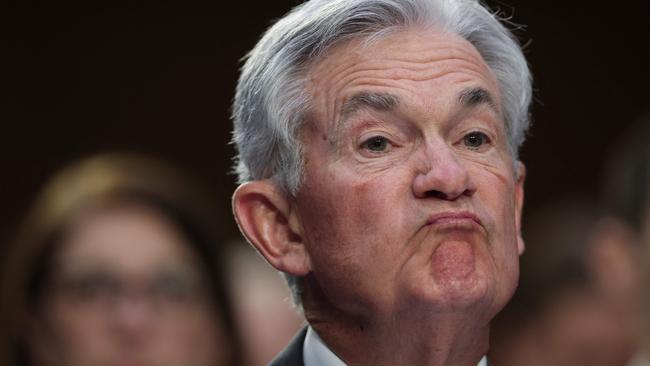
The American economy emerged from Covid lockdowns well before Australia but interest rates remain much higher and inflation is still stuck at around triple the Federal Reserve’s target of 2 per cent.
As Federal Reserve Chairman Jerome Powell made clear on Tuesday (Wednesday AEDT) in his regular congressional testimony, further interest rate increases are likely, explicitly flagging a return to jumbo 50 basis point increases as early as this month.
A federal funds rate (the US equivalent of the RBA’s cash rate) of 5.75 per cent later this year now looks likely, creating a potentially large gap if the RBA insists on keeping its rate at 3.6 per cent.
That prospect dragged down the Australian dollar 1.5 cents against the US currency in 24 hours, potentially adding to the inflation problem given Australia imports the vast bulk of its consumer goods.
The good news is the US economy has proved remarkably resilient to the sharp increase in interest rates.
Democrat senator Elizabeth Warren fumed in Tuesday’s hearing that Mr Powell’s planned interest rate increases might push two million Americans out of work.
But as the Fed began lifting interest rates in earnest early last year – from around zero to the current level of 4.75 per cent – you need a microscope to see any deleterious impact on the labour market.
Predictions of recession have been repeatedly mugged by reality in the US, and the jobless rate remains at 3.4 per cent, the lowest level since the 1960s.
The stock market hasn’t crashed, being still 23 per cent higher in the US than at the start of 2020. And almost incredibly, US house prices, according to the Case-Shiller Index, are still 34 per cent higher over the same period.
Australia might not be so lucky, having a large majority of home loans – and therefore Australians’ disposable income – linked to the Reserve Bank’s cash rate, unlike in the US where most home loans are fixed.
But local fearmongering could prove equally misplaced; economists have an excellent track record of being wrong.
Regardless, if Australia’s inflation, currently 7.4 per cent, follows roughly the same trajectory as the US, it too will settle at an uncomfortably high level in coming months.
And like the Fed, the RBA will have little choice but to keep lifting rates if its target of keeping inflation between 2 and 3 per cent is to mean anything.
For now, at least, central banks’ economic medicine doesn’t appear to be causing too much damage, except perhaps to their own economic credibility.
Central banks globally are facing a potential humiliation. For a generation they have claimed to be able to manage inflation by adjusting their short-term interest rate, but the data so far isn’t pointing to their actions having much of an impact.
It always was, after all, just a theory: unemployment, interest rates, and inflation were all high in the 1970s, and they were all very low, in the 2000s, suggesting an imprecise relationship at best.








Don’t count on this week’s Reserve Bank interest rate increase being the last if the US is any guide.